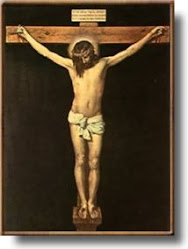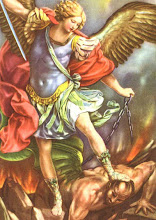The Gospel of Judas-
The Truth Behind the Controversy
By Eric Francke
Abstract- The extant Gospel of Judas is clearly not the same one as mentioned by Irenaeus in 180 AD.
In April of 2006, National Geographic announced that they were releasing the The Gospel of Judas which they claimed “presents a newly discovered account of the life of Jesus Christ.”
Newspapers all over the world picked up on the headline that there was some earth-shattering discovery within this document, one that was to throw a new contrary light on the traditionally accepted story of Jesus’ betrayal and the role of Judas in his execution. On April 7th, the full translation of the document went online.
Now that the codex and translation are available, the only conclusion an individual can draw who is remotely familiar with early church documents is that we’ve all been had by a hoax- or at the very least, a very cynical public relations campaign.
This is not to say that there is not a Coptic document called the “Gospel of Judas” which dates to within 300 years of the beginning of Christianity. There is. But it is light-years away from being what we were told it was.
The first clue should have been the timing of the press release: Less than two weeks before the Christian holiday Good Friday/Easter, when Judas is said to have betrayed Jesus. The release also happened to coincide with the paperback release of The DaVinci Code, and the movie is just two weeks away. Many of the “experts” who were involved in publicizing the Gospel of Judas even pointed out that it was a Gnostic work, similar to the ones that Dan Brown cited in The DaVinci Code to support his (plagiarized) thesis of the church covering up the “truth” about Jesus’ life and death.
The next glaring problem for The Gospel of Judas is the dating of the writing. No one disputes the fact that the papyrus itself dates to either the 3rd or 4th century. That is impressive, but no one would take seriously a work found in Egypt written 300 years after Christ as possibly having some authoritative one-up on the first three gospels, which were written in Palestine within a generation of the time Jesus lived. So the scholars involved in the translation and publicizing of the document are never remiss to point out that Irenaeus, the early church father who wrote around 180 AD, mentioned that the Cainite sect of Gnostics had a “Gospel of Judas” in circulation in his day. It is implied that the “Gospel of Judas” that we now have in possession is the same one that Irenaeus is referring to, which would mean that the Gospel of Judas dates to somewhere in the mid-second century. The only problem is that if you actually read what Irenaeus said about the work, and read the one we now have, it is clear that they are not the same work.
Following is exactly what Irenaeus said about the Gospel of Judas:
Others again declare that Cain derived his being from the Power above, and acknowledge that Esau, Korah, the Sodomites, and all such persons, are related to themselves. On this account, they add, they have been assailed by the Creator, yet no one of them has suffered injury. For Sophia was in the habit of carrying off that which belonged to her from them to herself. They declare that Judas the traitor was thoroughly acquainted with these things, and that he alone, knowing the truth as no others did, accomplished the mystery of the betrayal; by him all things, both earthly and heavenly, were thus thrown into confusion. They produce a fictitious history of this kind, which they style the Gospel of Judas.
As a quick explanation, Irenaeus is saying that the “Cainites” who produced the Gospel of Judas drew their spiritual heritage from Cain, who they say was derived from the “true” God, (not the “Creator” or “demiurge” God, who Gnostics considered evil). The “heroes” in the Cainite theology are those who the Bible would normally mark as the “bad” guys: Cain, who slew his brother, Esau, who strived against his brother; Korah, who led the rebellion against Moses; the Sodomites, who wanted to rape Lot; and of course, Judas. It is sort of a Nietzchien reversal of values, perhaps similar to Anton Levey’s Church of Satan today.
Now, if we were to compare that with the Gospel of Judas we have extant today, you will see that they are diametrically opposed. The document we have is not “Cainite” in its theology. It is a completely different branch of Gnosticism called “Sethien”. In the extant Gospel of Judas, there is no mention of Cain, nor praise heaped upon the hero-villians that you have in the Cainite variety of Gnosticism. On the contrary, the Gospel of Judas we have shows the exact opposite values. Consider this section from the document where the disciples relate a vision to Jesus.
”They [said, Some …] sacrifice their own children, others their wives, in praise [and] humility with each other; some sleep with men; some are involved in [slaughter]; some commit a multitude of sins and deeds of lawlessness. And the men who stand [before] the altar invoke your name.”
Jesus explains that these are the “ministers of error” who serve the evil god of this world, rather than the true “Power” that he represented. If the extant Gospel of Judas was “Cainite”, those doing “evil” would be the ones that were walking in the truth, rather than the other way around. More specifically, the current Gospel of Judas lists as “evil” men who sleep with men, while the Cainite version that Irenaeus spoke of commended the men of Sodom, who are the quintessential examples of homosexuality throughout the early church age.
So theologically, the extant Gospel of Judas belies the fact that it is not the same Gospel of Judas that Irenaeus spoke of in the second century.
We do get a clue to the date of the writing from other clues in the text. In this example from the extant Gospel of Judas, the "ministers of error" are posited before an "altar" in the manner of an established priesthood with a sacerdotal role. This, or course, is part of a typical diatribe of a breakaway gnostic sect against the orthodox church. However, in the second century, the sacerdotal role of the ministry was practically non-existent. It wasn't until the mid-third century, primarily under the influence of Cyprian of Carthage, that the role of the minister became identified as a priestly function at an altar.
Consequently, we know that Irenaeus’ Gospel of Judas and the version we have today are in no ways related. That being said, we have absolutely no reason to think that the document can be dated before the mid-third century.
Synopsis of Teachings from the Gospel of Judas
The Gospel of Judas presumably recounts events that took place in the last few days of Jesus’ ministry on earth. It begins with Jesus coming upon the twelve disciples offering a eucharistic prayer. Jesus scoffs at them, saying that they are only praying to “their” god, who is an inferior being when compared to the “Power” whom Jesus is supposed to represent.
While the disciples become indignant at Jesus mocking them, Judas appeals to Jesus privately to explain to him the mysteries of the Kingdom. In an apparent perversion of Peter’s declaration of “You are the Christ” from the orthodox gospels (Matt 16:16), Judas offers the great “revelation” of the Gnostic faith “I know who you are and where you have come from. You are from the immortal realm of Barbelo. And I am not worthy to utter the name of the one who has sent you.”
The disciples relate to Jesus a vision they had of a number of ministers standing in the temple, and ask Jesus for an explanation. Jesus explains how the earthly ministrations of the priests is all in vain, and how all human are being led astray.
Judas approaches Jesus with a question about the heavenly generation that is superior to all human beings. Jesus uses the explanation of the vision to launch into a convoluted description of Gnostic cosmology, repeated in part below:
”And look, from the cloud there appeared an [angel] whose face flashed with fire and whose appearance was defiled with blood. His name was Nebro, which means ‘rebel’; others call him Yaldabaoth. Another angel, Saklas, also came from the cloud. So Nebro created six angels—as well as Saklas—to be assistants, and these produced twelve angels in the heavens, with each one receiving a portion in the heavens.”
There can be some confusion here, since Yaldabaoth, identified alternately as “Nebro” the “rebel”, is pictured as being the creator of Saklas, who is later in the Gospel of Judas depicted as creating mankind and the physical world. However, in other Gnostic writings, Yaldabaoth is the “demiurge” or fashioner of the world, and is unambiguously identified as Saklas.1
Towards the end of the Gospel, Judas sees a light and is told by Jesus to enter into it. His spiritual ascension is contrasted by his simultaneous betrayal of Jesus for a sum of money. The clear dualism between the flesh (the man Judas betraying Jesus) and the spirit (the enlightened Judas entering the aeons of the true divine beings) is unequivocal.
The Value of the Gospel of Judas Today
The rediscovery of the Gospel of Judas is a remarkable find, and is in no ways inferior to many of the Nag Hammadi documents discovered in the 1940’s. It is just another retelling of the Gnostic worldview, with a few distinctions.
It is of interesting note that the writing makes a special mention of “men that sleep with me” as earning a place of particular condemnation in the temple vision. In the current culture war, there has been a move among religious liberals to maintain that homosexuality was never really a “sin” in early Christendom. The same religious liberals tend to put greater ranks of importance on works like The Gospel of Judas- until of course they realize that it contradicts their own social agenda.
In conclusion, the book may tell us something about the evolution of gnosticism, and a clearer idea of the ethos of the mid-third century. However, it tells us nothing about the relationship of Judas and Jesus, or shed any light on the events surrounding Christ’s betrayal. It was written 300 years too late for that. Neither can it tell us anything about 2nd century Christianity, as many of those publishing the work had floated. The current Gospel of Judas has no relationship to the Cainite Gospel of Judas that was extant in Irenaeus’ day. They only share the same name.
--------------------------------------------------------------------------------
1 Now the archon who is weak has three names. The first name is Yaltabaoth, the second is Saklas (“fool”), and the third is Samael. And he is impious in his arrogance which is in him. For he said, ‘I am God and there is no other God beside me,’ for he is ignorant of his strength, the place from which he had come.” Apocryphon of John, ca. 200 AD.
(The “splitting” of Yaldabaoth and Saklas into two separate beings is indicative once again of the late date of the Gospel of Judas, since like belief systems tend to split and multiply beings, as evidenced by the evolution of Hinduism from Monomadic to thousands of deities, and Christianities cult of saints.)
http://www.earlychurch.net/gosofjudas.htm
CHRISTIAN RELIGION ARTICLES
Iscriviti a:
Commenti sul post (Atom)



































Nessun commento:
Posta un commento